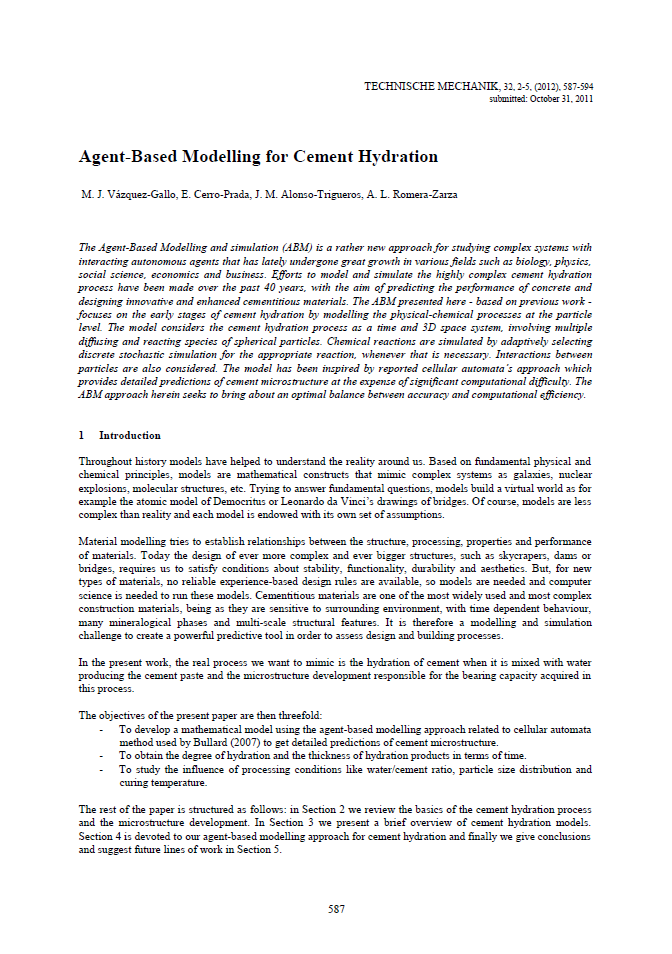Agent-Based Modelling for Cement Hydration
Abstract
The Agent-Based Modelling and simulation (ABM) is a rather new approach for studying complex systems with interacting autonomous agents that has lately undergone great growth in various fields such as biology, physics, social science, economics and business. Efforts to model and simulate the highly complex cement hydration process have been made over the past 40 years, with the aim of predicting the performance of concrete and designing innovative and enhanced cementitious materials. The ABM presented here - based on previous work - focuses on the early stages of cement hydration by modelling the physical-chemical processes at the particle level. The model considers the cement hydration process as a time and 3D space system, involving multiple diffusing and reacting species of spherical particles. Chemical reactions are simulated by adaptively selecting discrete stochastic simulation for the appropriate reaction, whenever that is necessary. Interactions between particles are also considered. The model has been inspired by reported cellular automata’s approach which provides detailed predictions of cement microstructure at the expense of significant computational difficulty. The ABM approach herein seeks to bring about an optimal balance between accuracy and computational efficiency.





